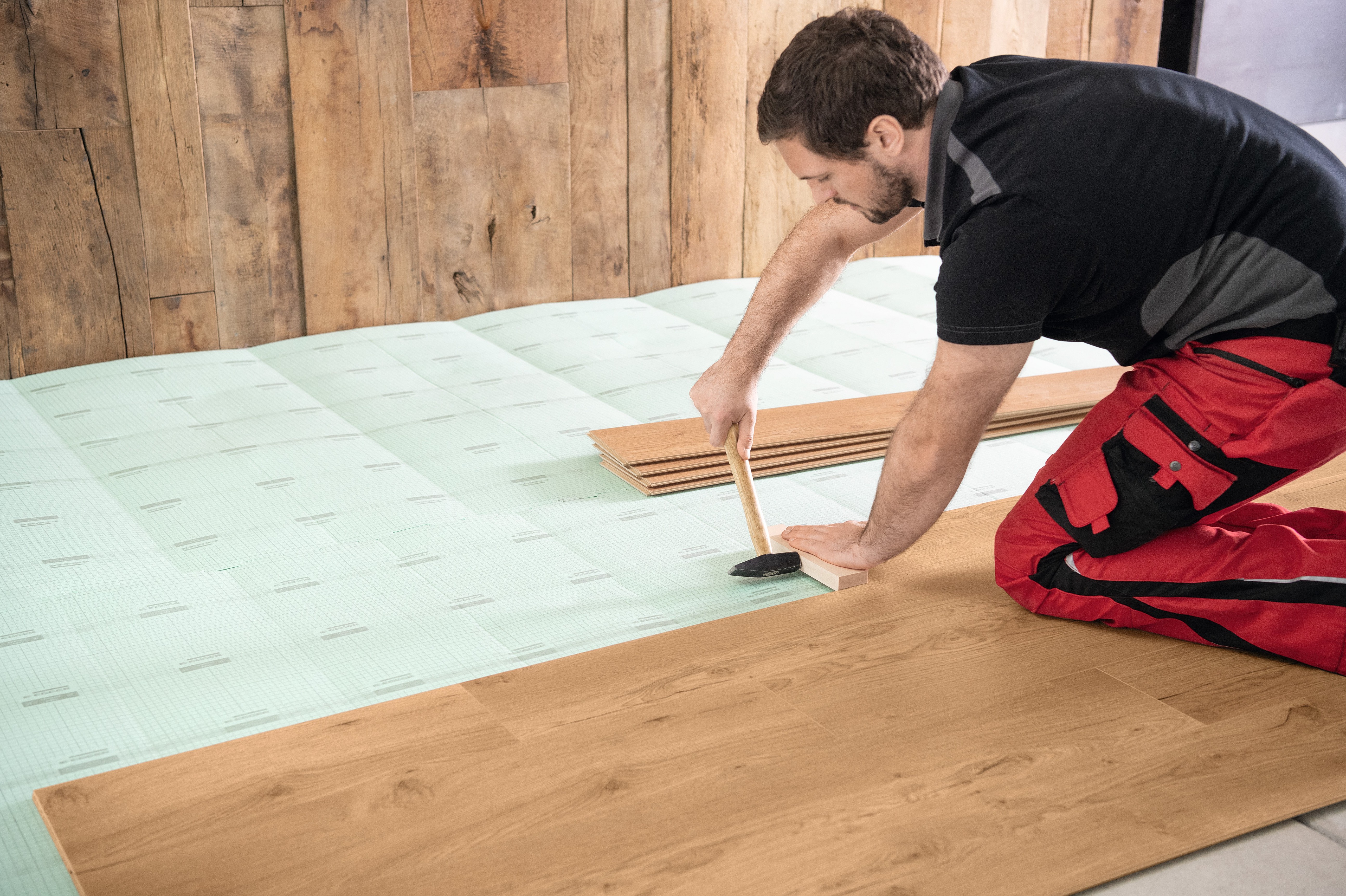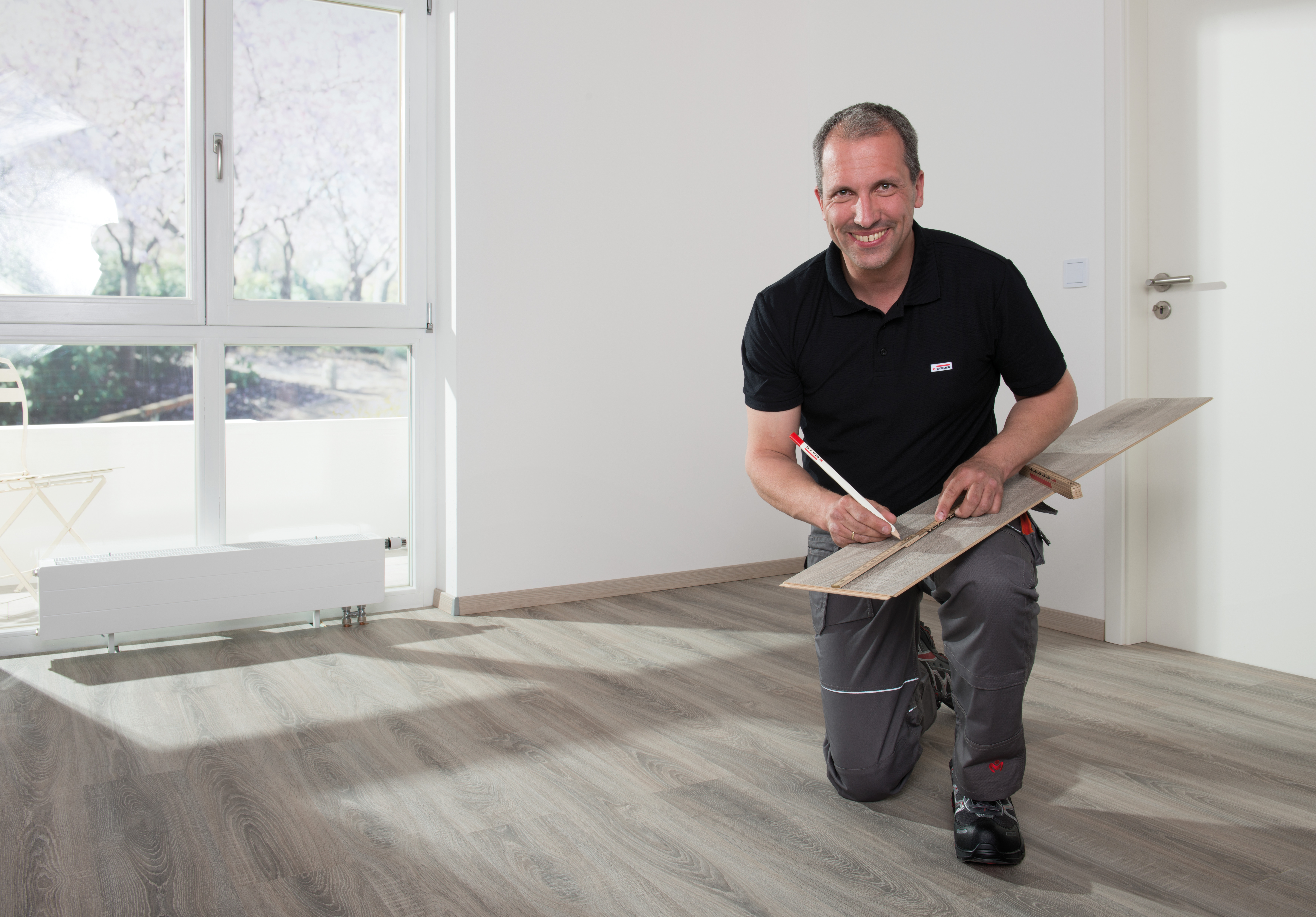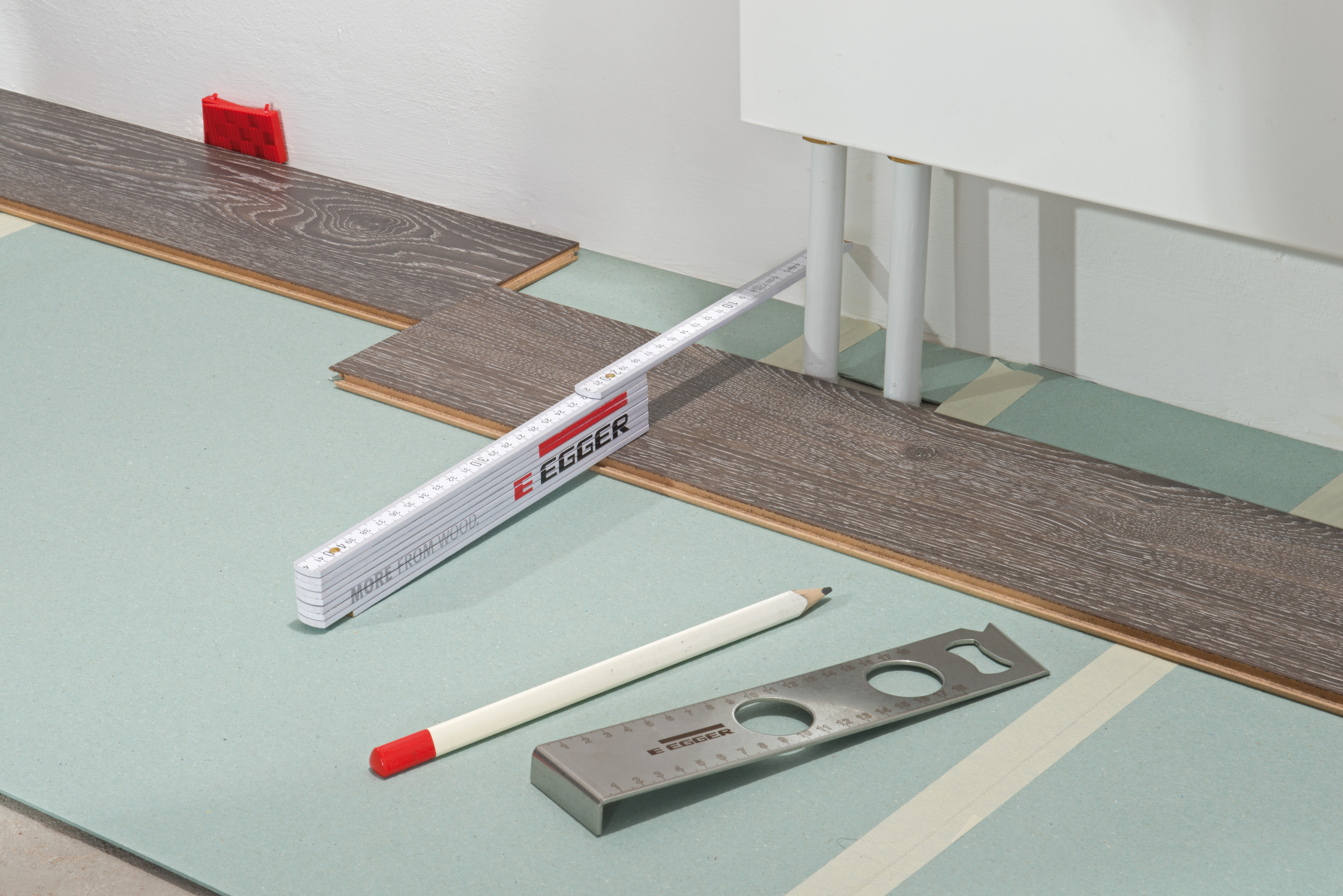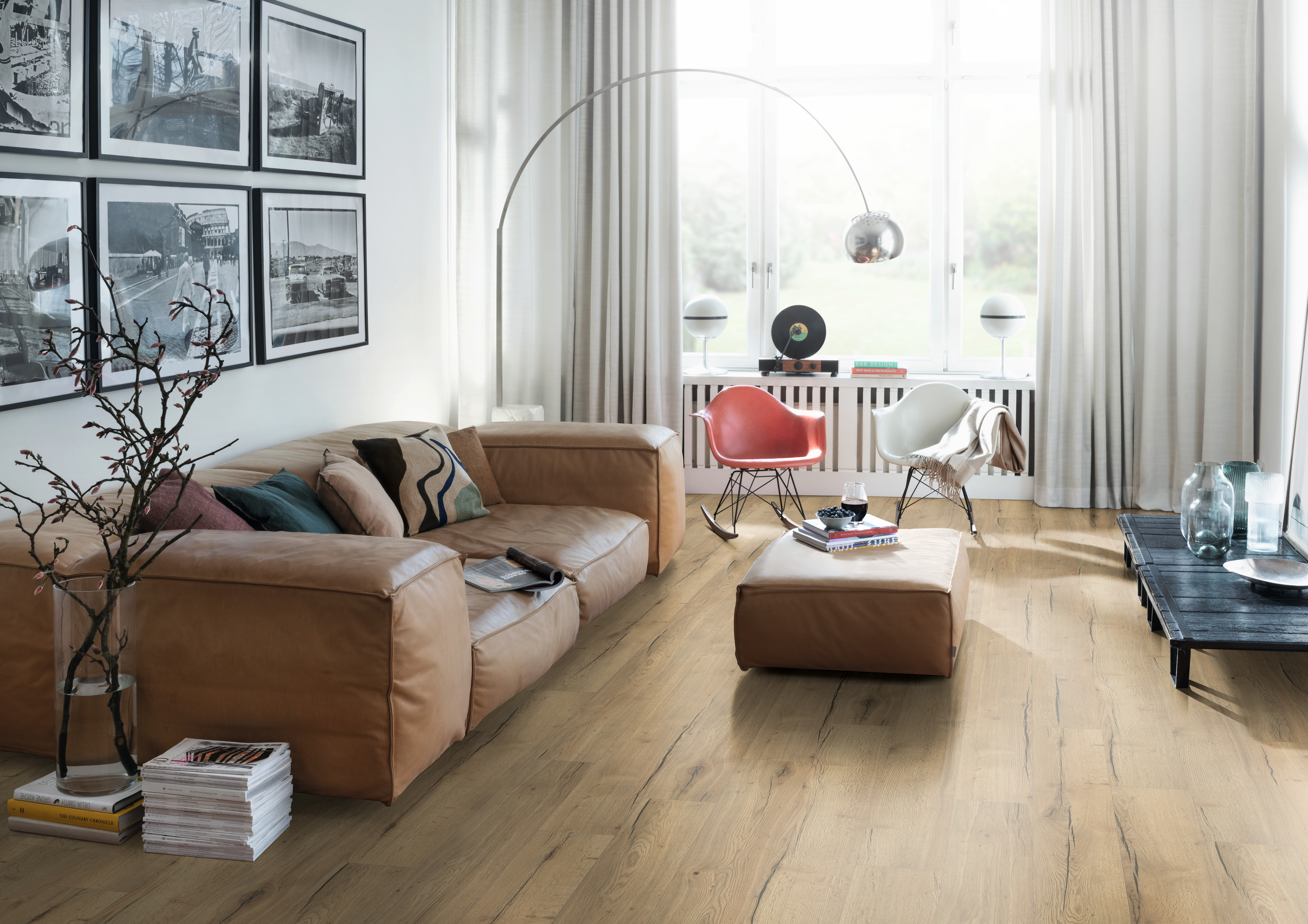
Laminate flooring has soared in popularity in recent years thanks to its durability and stylish finish, as well as its simplicity and ease of installation. However, as with installing any other type of flooring, knowing how much laminate you need is a crucial step in the planning process. Ordering too little can elongate the time the job takes while buying too much can make an unnecessary dent in your renovation budget.
So, how exactly do you work out how much laminate flooring you need? In this guide, we’ll take you through the process of measuring your space accurately, accounting for irregularly shaped rooms, waste, and mistakes.
- How to measure for laminate flooring
- How to measure a difficult room for laminate flooring
- How much laminate do I need?
Article by: Laura Walker , Design & Flooring Senior Specialist, EGGER UK
How to measure for laminate flooring

If you’re wondering how to calculate the amount of laminate flooring you need, you first need to measure your room. To do this you’ll need the following tools:
- A tape measure
- A notepad and pencil
- A calculator
The good news is that measuring for laminate flooring is a relatively simple process. To make it even easier, we’ve broken it down into three straightforward steps you need to follow to ensure you get the right amount of laminate flooring for your space:
Step 1: Use your tape measure to measure the length and width of the room and make a note of these measurements. You should measure for laminate flooring in metres as packs are usually advertised per metre squared.
Step 2: Use the measurements you’ve gathered to work out the area of the room in square metres. To do this, simply multiply the length of the room by the width. For example, if the flooring is for a room that is 5 metres long and 4 metres wide, the total area of the room is 20 square metres (5m x 4m = 20m²).
Step 3 : After working out the total square area of the room in metres, account for an extra 10% for waste and mistakes. You can easily work this out by multiplying the area of the room in square metres by 1.1. For example, 20 x 1.1 = 22, so for a room that measures 20m² you should buy 22m² of laminate flooring. A 10% surplus will ensure you have enough for offcuts, mistakes and any future repairs. If you don't have much experience laying laminate flooring and want to be extra cautious, you may prefer to go up to 15% extra flooring. We would also recommend having 15% extra flooring for patterned or tile-effect boards to ensure you have ample supply for future repairs in case the line is discontinued.
When measuring your room, you don’t need to account for an expansion gap in your area calculation, as it’s factored in during the laminate flooring installation process. However, ensure that the gap is left during the installation. Failing to account for the expansion gap is a common mistake when laying laminate flooring which can lead to future issues and make the laminate less durable and more susceptible to wear and tear.
How to measure a difficult room for laminate flooring

It can be challenging to figure out how much laminate flooring you need for difficult rooms with irregular shapes, alcoves, or multiple obstacles such as built-in wardrobes. However, with a methodical approach, you can still determine the correct laminate flooring measurements for your space. Follow the simple steps below to measure for laminate flooring in a difficult room.
Step 1: Divide the room into more simple shapes, such as rectangles or squares, to make taking measurements easier. Once you’ve split the room up, make notes of the length and width of each section to work out the area in square metres for each part of the room.
Step 2: If there are obstacles such as built-in wardrobes, fireplaces, or bay windows, measure these areas individually and subtract them from the total. For example, if a fireplace takes up 1 square metre, subtract this from the overall area.
Step 3: Once you’ve calculated the area of each section in square metres, add these together to get the total area and multiply by 1.1 to account for the extra 10% backup laminate. For example, if area A measures 11m² and area B measures 4m², add these two measurements together to get 15m². Then, multiply 15m² by 1.1 to account for the extra 10%, which will come to 16.5m².
If the room has a particularly complex shape, you may need to create a scaled drawing on graph paper to ensure accuracy. Mark out each section clearly and calculate the area as described above.
How much laminate do I need?

Once you’ve worked out the area of your room(s) in square metres, the next step is to figure out how many packs of laminate you need.
Laminate flooring is typically sold in packs and the quantity is usually listed in square metres. To figure out how many packs you need, you must first find out the area one pack of your chosen laminate flooring covers. This information is usually printed on the packaging or available from the supplier.
Here at EGGER, our laminate flooring packs come in a range of sizes depending on the type of laminate you choose, from smaller packs like the EPL044 Dark Hunton Oak which covers 1.22 m² per pack, to larger packs like the versatile ED7002 Light Brown Victoria Oak , which covers 2.54 m² per pack. Many of the packs on offer at EGGER cover 1.99 m².
Once you’ve found out how much one pack covers in square metres, divide the total area of your room (and the 10% extra) by the area covered by one pack. This will give you the number of packs needed. It’s always best to round up to the nearest whole number to ensure you have enough material to cover the space. For example, if each pack of laminate flooring covers 1.99 square metres, and you need 22 square metres of flooring, you would divide 22 by 1.9, which would give you 11.5 packs, so you should round this up to 12.
If you’re installing flooring in multiple rooms, repeat this process for each room and add the totals together to get the final total for the whole area you’re renovating. It’s always a good idea to purchase an extra pack or two, especially if the flooring is from a limited batch. This means that if there are any problems with the flooring in the future and you have to remove parts of the laminate , you’ll have the exact match on hand.
Now you know how to measure your floor for laminate, you can work out how many packs of laminate you need and feel ready to take on your next renovation project in confidence. Remember, it’s always best to be on the safe side, so don’t forget to account for that extra 10% for mistakes, offcuts, and future changes.
The key to success when updating your flooring is choosing the best products. EGGER’s laminate flooring is made to the highest quality, so you know you’re investing in the best with us. We have a huge selection of laminate flooring styles on offer, plus underlays and skirting for all your installation needs. Use our flooring finder and flooring visualiser to discover the best fit for your home.
Don’t forget to check out our laminate flooring resource hub for more useful tips and inspiration.
Support
This article is for informational purposes only. If you are searching for the information about specific EGGER products, please visit our knowledge hub .
